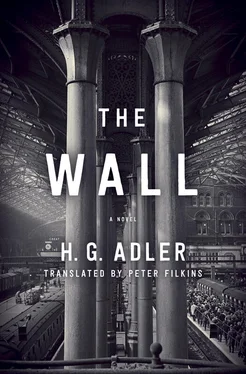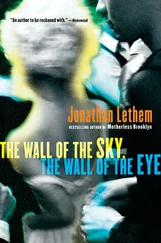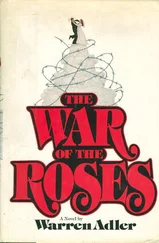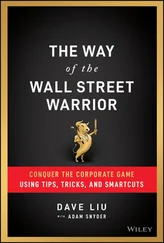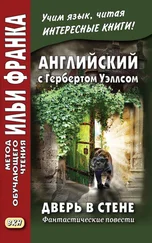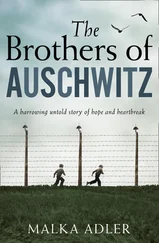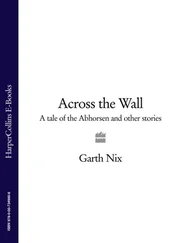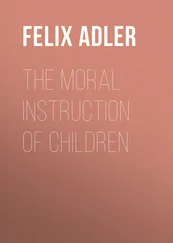I wish to express my thanks to the German Academic Exchange Service (DAAD) and the Deutsches Literaturarchiv for grants that allowed me to research Adler’s letters and manuscripts in his archive in Marbach, Germany. I am also grateful to Bard College at Simon’s Rock for a sabbatical and leave, and for the support provided by a residency at the James Merrill House, where part of the translation was completed. As always, I remain deeply grateful to my colleague Chris Callanan for his kind contribution in answering many questions on the German, and to Jeremy Adler for his patient and supportive response to queries throughout. I also wish to thank Susan Roeper for her faith and sustenance throughout the process, and Lindsey Schwoeri and Sam Nicholson, my editors at Random House, for their committed and generous support during the many months spent on the novel’s translation.
LIST OF CHARACTERS (IN ORDER OF APPEARANCE)
DR. ARTHUR LANDAU: Born in a continental city much like Prague, he is a concentration-camp survivor. His parents were deported and killed, and his first wife, Franziska, also died in a camp. After the war, he returns to his native city and works in a museum that collects items belonging to those who perished. Eventually he chooses to emigrate to a metropolis much like London, where he meets Johanna Zinner, marries her, and with her raises their children, Michael and Eva, while he struggles to find enough support to write his Sociology of Oppressed People .
FRÄULEIN ZINNER/JOHANNA LANDAU: Having emigrated to the metropolis before the war, she works in the Search Office at the Bureau for Refugees. She lost her parents and her two brothers during the war. She meets Arthur Landau, marries him, raises their children, and provides the principal support for the household.
PROFESSOR HILARIUS PRENZEL: Arthur’s high-school teacher. Early on Arthur has a nightmare of returning to his native city to visit him, only to be betrayed by Prenzel and turned in to the authorities at the train station as an alleged spy.
MICHAEL AND EVA LANDAU: Arthur and Johanna’s children.
HERR AND FRAU KUTSCHERA: Proprietors of the fruit stand around the corner from the clothing store run by Arthur’s father, Albert. When Arthur returns to his native city, they are the first to tell him that his parents were taken away.
PETER: A young man who finds Arthur sprawled on a sidewalk in his native city after Arthur stumbles while fleeing a collection point for refugees at the train station. Peter then takes him to his friend Anna Meisenbach.
ANNA MEISENBACH: She takes Arthur in and allows him to spend a night, before having him move in with Peter. Anna’s brother, Arno, went to school with Arthur but has since been executed for political crimes. She and Arthur talk of the postwar conditions in the old city and the loss of her first husband, Hermann, in the war.
SO-AND-SO/LEONARD KAUDERS: A boyhood friend of Arthur’s and a sociologist who escaped to the metropolis before the war, and the first person Arthur writes to from his native city after the war. So-and-So tries to help Arthur find support in the metropolis, but with little actual success. His wife’s name is Karin.
PROFESSOR KRATZENSTEIN: A very prominent sociologist and the head of the International Society of Sociologists. Arthur approaches him for help in getting the support he needs to work on his Sociology of Oppressed People , but Kratzenstein discourages him and does not approve of his scholarly approach.
DR. JOLAN AND HANNAH HAARBURGER: Refugees from Budapest who host a party at which they introduce Arthur to a circle of intellectuals and prewar refugees.
HERR BUXINGER: A bookseller in the circle of prewar refugees living in the metropolis.
RESI KNISPEL: A press agent from Zurich. She later tries to get Arthur to help her start a journal called Eusemia .
LARRY AND IDA SAUBERMANN: Philanthropic factory owners. Later, Johanna seeks work in their factory, which manufactures artificial beads, but Frau Saubermann instead condemns Arthur for failing to properly provide for his wife and children.
DR. EDUARD AND KLARA SINGULE: He is the head of a foundation but was trained as a zoologist. She is his wife and a prominent socialite. Arthur asks Singule for financial support for his work, but to no avail.
BRIAN AND DEREK: Pallbearers assigned to pick up Arthur at his home on West Park Row and take him to a crematorium, where he is to be cremated. They later return to take him to the Sociology Conference held at Shepherd’s Field, at which he is to be honored. The driver of the hearse is named Jock.
HERR SCHNABELBERGER: He is the director of the museum at which Arthur works after returning to his native city following the war.
FRAU DR. KULKA: The assistant to Herr Schnabelberger at the museum. She believes the goods left behind by the victims belong to the state, whereas Arthur treats them like precious beings that need to be tended to with the utmost care.
FRAU HOLOUBEK: Once the servant of Arthur’s grandmother, she now passes on goods to Arthur from those who have died.
FORTUNATA: A Gypsy fortune-teller Arthur first encounters at a fair at Shepherd’s Field, and then again at the Sociology Conference later held there.
HELMUT: Anna Meisenbach’s second husband, who, along with Peter and Anna, sees Arthur off when he leaves his native city by train. Later Helmut dies suddenly, prompting Anna to emigrate to the metropolis, where Arthur and Johanna take her in and help her start a new life.
HERR GESCHLIEDER: The porter at the museum where Arthur works.
FRAU FIXLER: Professor Kratzenstein’s secretary.
SIEGFRIED AND MINNA KONIRSCH-LENZ: He is another philanthropist who offers to help Arthur, but only by offering to hire him to do menial work in his wallpaper manufacturing business.
GUIDO AND MITZI LEVER: Visitors from Johannesburg who grew up in Arthur’s native city and fled before the war, and who later return to the city and visit the museum where Arthur works. Guido’s family name used to be Lebenhart. His brother, Eugene Lebenhart, owned the portraits of their grandparents that Arthur cataloged at the museum at the start of his employment there.
MRS. MACKINTOSH: The wife of a high-ranking official at the British Embassy who tries to buy furniture from the collection gathered in the museum in Arthur’s native city.
DR. OSWALD AND INGE BERGMANN: Brother and sister. He is a prominent scholar who knew Arthur in his native city, which he escaped before the war, changing his surname to Birch after immigrating to the metropolis. His sister is a poet and an illustrator of children’s books. They are there to greet Arthur when he arrives by train, though Oswald had initially been unresponsive when Arthur wrote from his native city to ask for his help in emigrating.
OTTO SCHALLINGER: A friend of Arthur’s from middle school, who is also there to greet Arthur when he arrives in the metropolis.
EBERHARD S.: The editor who initially gets Arthur to write for Eusemia , and who is disastrous at running the journal.
BETTY: Johanna’s second cousin, who lives in South Wales, where Arthur and Johanna find a welcome respite from their struggles in the metropolis.
The Wall is a novel of sudden and subtle transitions between the past and the present, operating much like a symphonic score in its repeated themes and motifs. To aid the reader in moving through these transitions, the following synopsis is provided.
This page:Arthur Landau at home on West Park Row, in a metropolis much like London.
This page:Arthur dreams of a train journey back to his native city, a clear stand-in for postwar Communist Prague, where he is betrayed by a former teacher, Professor Prenzel, and detained by the state authorities.
Читать дальше
